
Although none of us are exploring much outdoors right now as we shelter at home, someday we'll head out there again, directly experiencing the elements that connect us with our natural world.
Before we lead a trip into the field, Sierra Club Outings leaders need to become familiar with the locales and specific routes we’re planning to visit with a group. Last October and November I had the opportunity to scout a trek in the Himalayas of Nepal, and I’d like to share some highlights of that trip with you.
A really long flight and another way-long-enough connecting flight brought me to Kathmandu, Nepal’s capital and largest city. After a couple of days adjusting to the 12-hour time zone shift, doing my best to stay awake during the day and sleep through the night, I embarked with my guide Sunae and porter Chaam on a 6-hour jeep ride west to the trailhead in Soti Khola village, at an elevation of 2,350 feet. We began our trek the next morning, ascending the valley of the Buri Gandaki River, crisscrossing on suspension bridges high above the rapids.
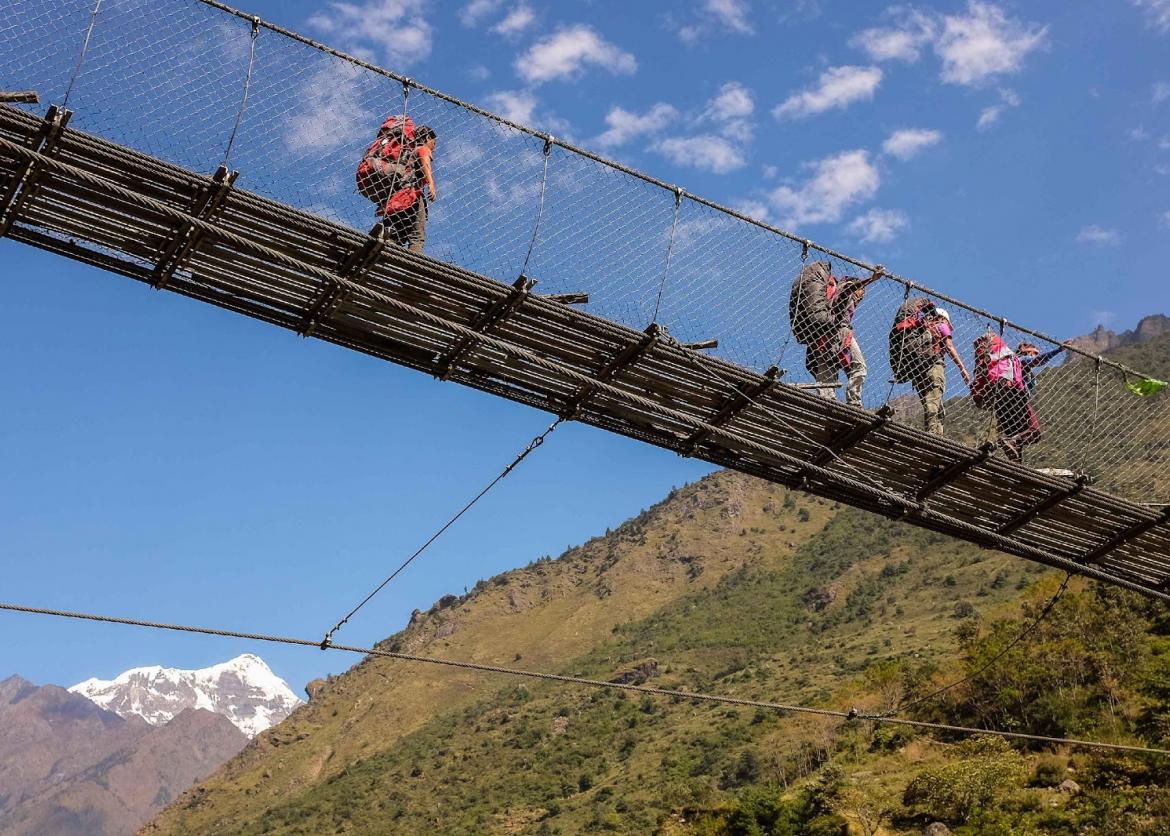
Walking the bridge above the Buri Gandaki. Photo by Steve Veit.
We gained elevation steadily, but gradually to avoid acclimatization difficulties, and stopped each night for meals and a warm bed at simple but comfortable trekking lodges. Six days in, we arrived at Sama, a sizable village with a notable Buddhist monastery, and a good place to stop for a much needed layover day. Like so many villages in this region of Nepal, this area suffered greatly in the devastating 2015 earthquakes, and rebuilding efforts continue.
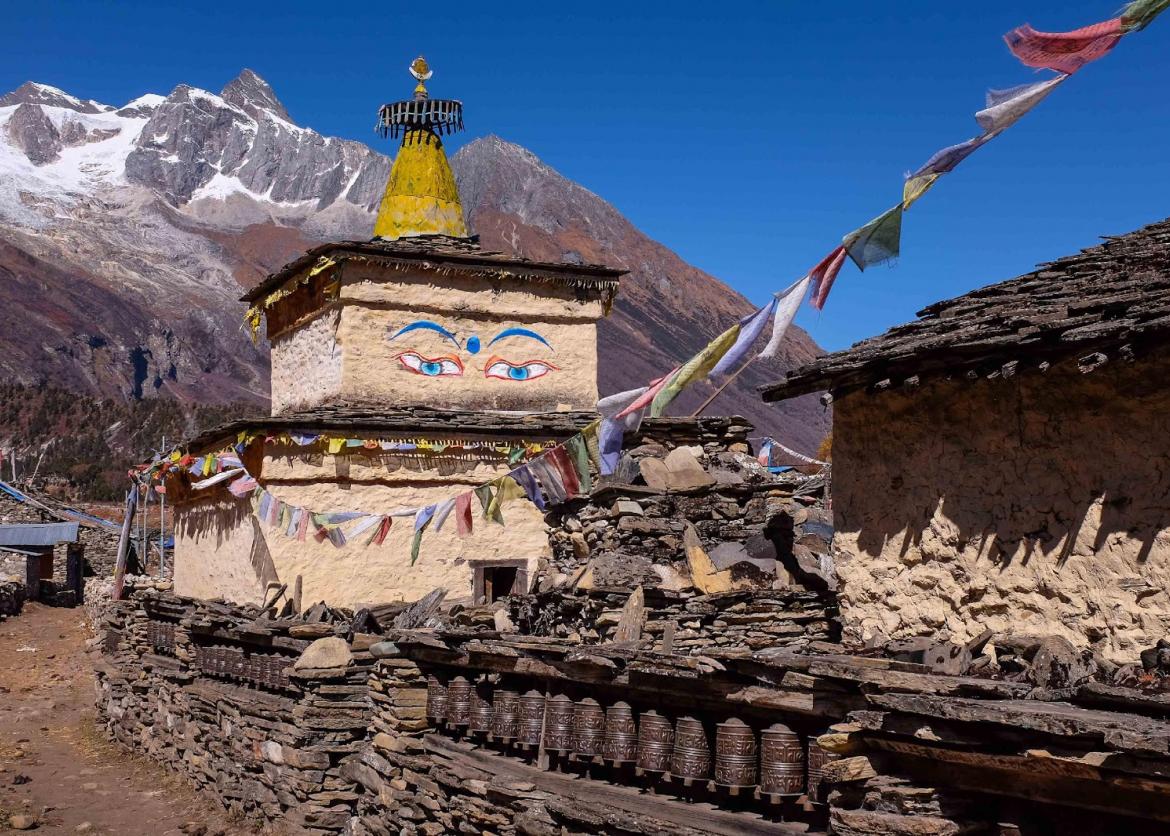
Chorten at Sama. Photo by Steve Veit.
A day hike up to the glacial lake of Birendra Tal rewarded us with our first close-up views of Manaslu, at 26,781 feet, the world’s eighth-tallest mountain.
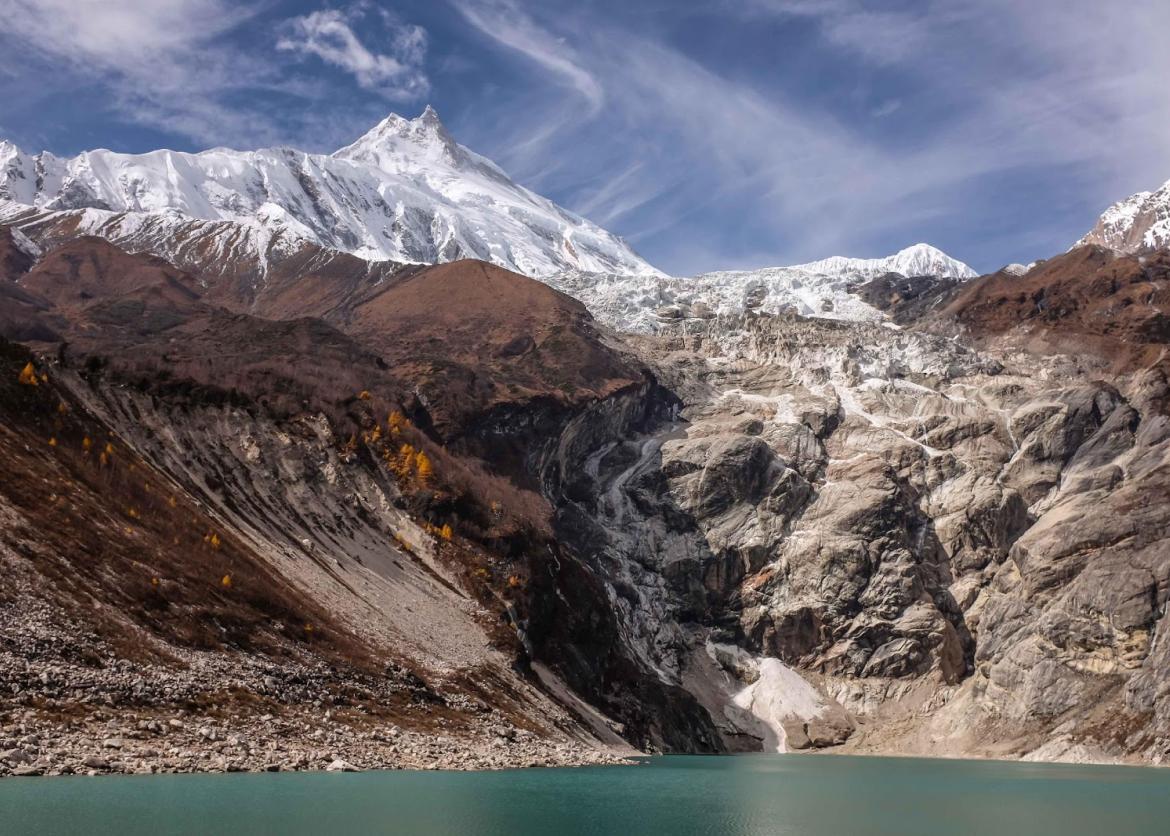
Manaslu from Birendra Tal. Photo by Steve Veit.
After another three days’ trekking, we get to a cluster of rustic lodges known as Dharamsala. At an elevation of 14,700 feet, Dharamsala, which translates roughly to “resting place,” is fairly close to the pass and is where everyone hoping to cross the pass spends the night. From here the highpoint of the trek at Larkya La (Larkya Pass) lay four miles ahead and 2,000 feet higher, straddling a ridge sloping down from Manaslu to the south and rising to the border with Tibet just a few kilometers to the north. To avoid the predictably high winds over the pass beginning around 10 a.m., parties are advised to depart the lodge early.
We started up the rocky trail along the glacial moraine in the pre-dawn darkness at 4:45 a.m., our careful steps guided by the beams of our headlamps. As the sky began to lighten, our path ahead became clearer and clearer. Startled by a loud cracking noise off to the side, we turned our gaze across the glacier. A chunk of ice warmed by the morning sun had broken off the east face of Manaslu’s north summit. We watched from our safe spot on the trail as a huge avalanche roared down from above and onto the glacier, pushing a wind ahead of its fall that carried across the glacier and blew in our faces, ensuring that now we were fully awake, despite our somewhat groggy start.
There were towering snow-capped mountains everywhere, glaciers below, and prayer flags left in thanks by previous visitors. We had seen a bit of our world that only a few are fortunate enough to share.
Halfway to the pass now, the unfiltered sunlight was as intense as the darkness had been total. Another hour and we could begin to make out the strings of prayer flags that festooned a cairn way up ahead, and before long we arrived at the 16,700 foot pass.
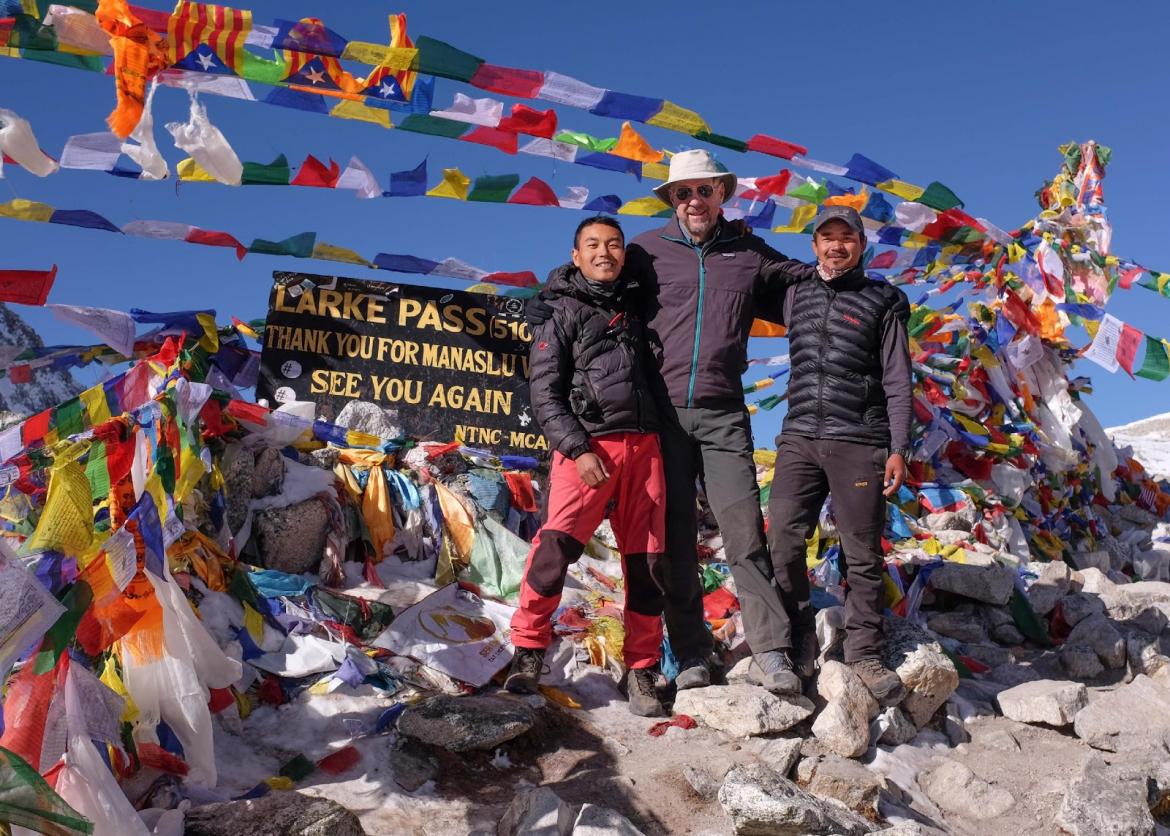
Chaam, Steve, and Sunae at Larkya La. Photo by Steve Veit.
Conveying the feeling of being at this highpoint of the journey on that crystal clear day is about as challenging as actually getting there. Perhaps even more challenging, now that I think about it. A photo provides some hint of the experience.
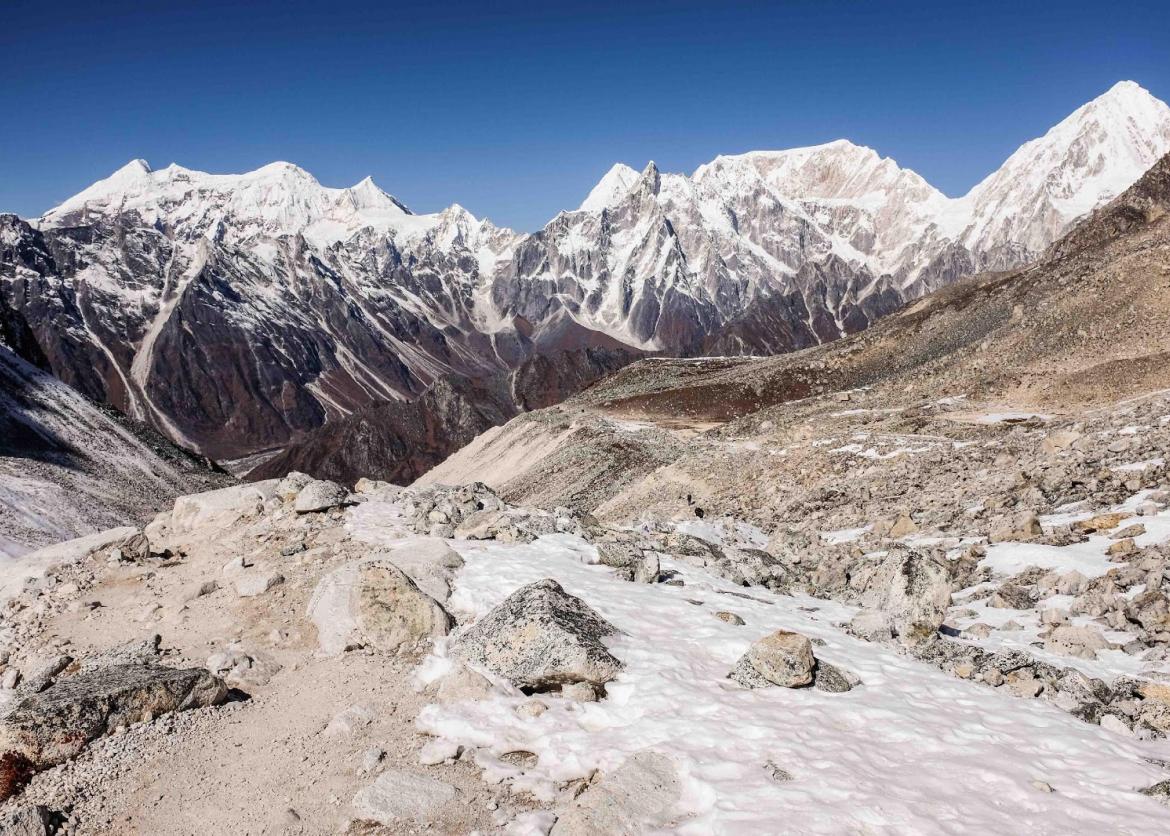
Snowcapped mountains at the Larkya La summit. Photo by Steve Veit.
There were towering snow-capped mountains everywhere, glaciers below, and prayer flags left in thanks by previous visitors. After a short rest, snacks, and a few photos we started down the steep trail, stopping along the way for tea and lunch. Another few hours down the trail and we reached our evening’s destination, Bimthang village, almost 5,000 feet below the pass. A long day, but a memorable one. In the relative comfort of the trekking lodge, it really didn’t matter that the facilities were basic and the small room was unheated. We had seen a bit of our world that only a few are fortunate enough to share.

Arriving at Bimthang. Photo by Steve Veit.
From there, another three days’ trekking down the Dudh Khola and then the Marsyangdi Khola river valleys brought us to the road connection at Syange village where the next morning we boarded our jeep for the ride back to Kathmandu.
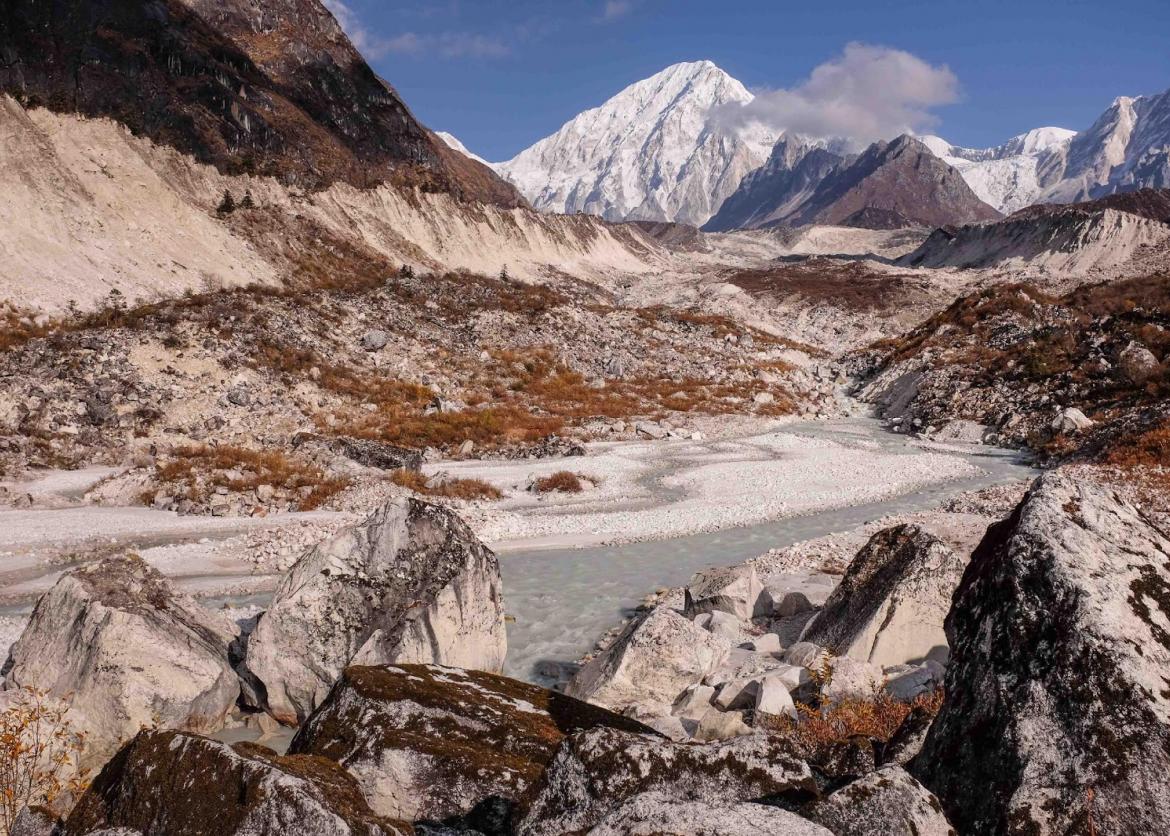
Source of the Dudh Khola. Photo by Steve Veit.
I look forward to returning to the Himalayas and leading a Sierra Club group on this journey beyond Manaslu, whether later this year as currently planned, or next year. In one sense, trekking in the Himalayas is nothing more than simply walking, and is perhaps unremarkable. In another sense, though, a trek through this ruggedly powerful landscape can prove to be a journey that transcends ordinary experience and deepens appreciation for the remarkable beauty of the natural world that we so often overlook, distracted as we are by the day-to-day activities of our busy lives.
What is it about mountains that amazes us, that we regard with such awe? I’m not at all sure, but for now I’m happy to continue pondering the question.
